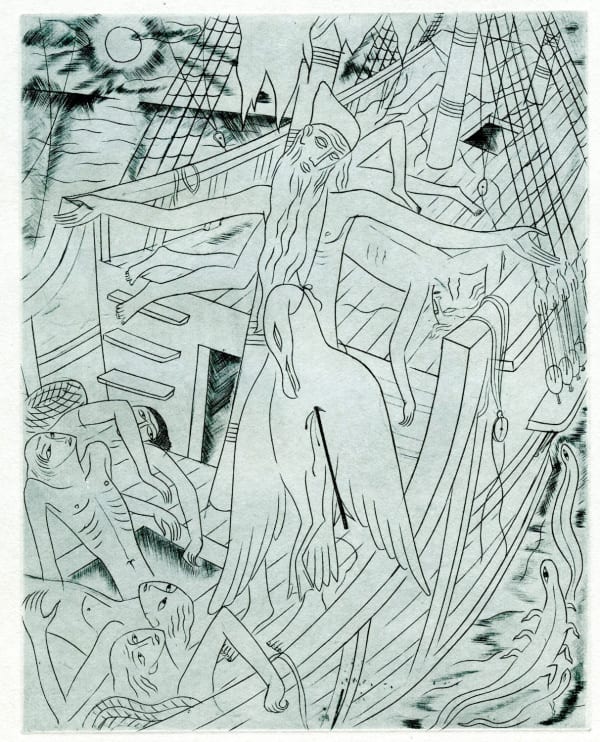Engraving is the earliest of the intaglio printmaking processes, in which an image is engraved directly onto a metal plate, usually made of copper. It is a highly skilled and painstaking technique. A sharp tool called a burin is held in the palm and driven forward with pressure by the forefinger, gouging out the metal in lines composed of v-shaped grooves. The copper residue from the incisions is wiped away and the surface thoroughly cleaned before the plate is inked and passed through the press.
Characteristic of traditional engraving are the controlled regular lines, almost mechanical in appearance, which require years of practice and a steady hand. In this 16th century of Juno abu Hendrik Goltzius, the regular character of the engraved line is clearly visible.
-
'Engraving really intrigues me...it's portable - I pick it up and take it with me on the bus, in the boot of the car - and of course it makes working at a larger scale much less expensive'
- Chris Orr RA
-
Examples
-

Albrecht Dürer, Knight, Death and the Devil, 1513
Engraving
-

Jean Emile Laboureur, L'entomologiste, 1932 - 1933
Engraving
-

David Jones, The Curse from The Rime of the Ancient Mariner, 1928
Engraving with Drypoint
-

Jan Saenredam, from Five Wise and Five Foolish Virgins, 1606
Engraving
-

Cornelis Bloemart, Owl with Candle, 1625
Etching & Engraving
-

John Keyse Sherwin, Portrait of William Woollett, 1784
Line-engraving
-







 A Buyer's Guide to Prints
A Buyer's Guide to Prints